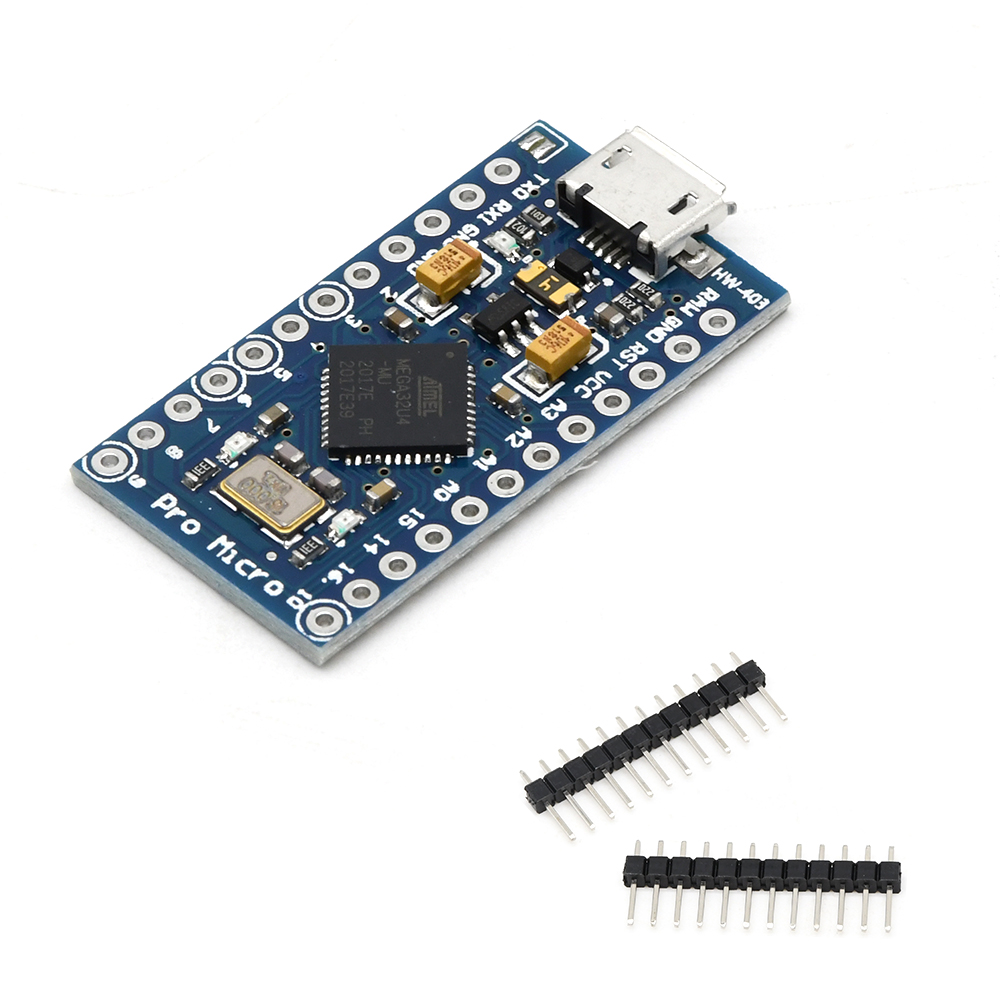
- #Arduino leonardo pro micro atmega32u4 install#
- #Arduino leonardo pro micro atmega32u4 serial#
- #Arduino leonardo pro micro atmega32u4 drivers#
- #Arduino leonardo pro micro atmega32u4 update#
Edit the pasted code and modify the following lines to set your own values :.# custom32u.name=Custom Atmega32UĬ_for_upload_port=trueĬ=caterina/Caterina-Leonardo.hexĬ_product= "My device name " =AVR_LEONARDOĬ_flags= Open the notepad as an administrator and edit the “boards.txt” file and add to the end the following section.Go into the Arduino IDE installation folder and inside the hardware\arduino\avr folder (ie : C:\Program Files (x86)\Arduino\hardware\arduino\avr on a standard installation).Create your firmware Environment installationĪdding a custom board to the Arduino IDE with your PID/VID This can be unlocked by sending either the upload unlock command or unplugging/plugging the device. Upload will be locked after 15 seconds (can be customized) after the device is plugged. To reduce unwanted flashes, sketch offers a basic upload lock security. Ideally LEDS must be ordered in end user logic (telemetry LEDS then buttons …)Īrduino best feature is the ability to flash it but it’s also its biggest weakness when it comes to commercial products. The sketch can aggregate up to 4 RGB LEDS strips (WS2812B Neopixels and/or PL9823), each one having it’s data pin, each strip can have its direction reversed.
#Arduino leonardo pro micro atmega32u4 update#

The required sketch and utility can be downloaded here : Please contact me at so we can evaluate the possibilities. Overall using this sketch is not the only way to do and is not intended to constrain manufacturers, if you are building your commercial device and have already done your firmware, want a deeper integration etc.

In order to port this protocol to another platform you can refer the the protocol description given at the end of this document.

The sketch is a skeleton giving all the minimal code to make the leds work, other features like controller etc, can be added on your side. That's why this firmware can't run on any standard arduino uno, arduino nano or arduino mega.
#Arduino leonardo pro micro atmega32u4 serial#
This requires a dedicated PID/VID so SimHub can recognize the device without requiring the user to choose the serial port. It is intended to simplify end user device usage (at the price of a little more configuration while building the firmware.) It is compatible with ATmega32U4 with Arduino bootloader (Arduino pro micro, Arduino leonardo). This firmware (arduino pro micro sketch) is intended for small productions of commercial leds based devices. The sketch doesn't really matter, even empty ones don't do anything different.Getting started with the SIMHUB STANDARD ARDUINO PRO MICRO LEDs sketch Introduction Really confused, and by uploading the code, nothing really happens, the green progeess bar just fills up and stays like that until a few minutes, until it pukes out an error: "avrdude: error: programmer did not respond to command: exit bootloader".

Later (for whatever reason) I uninstalled the "Uknown device" device in the Device manager. In the IDE, the Arduino is seen as being on port COM1 always, no matter which port I actually really use.
#Arduino leonardo pro micro atmega32u4 drivers#
And afterwards, Leonardo disappeard, and an "uknown device" in the Device manager appeard - installing drivers results in a failure every single time.Īfter this, my Pro Micro gets recognized as an unknown device by Windows everytime I plug it into the PC.
#Arduino leonardo pro micro atmega32u4 install#
My brand new Pro Micro with an ATmega32U4 5V 16MHz doesn't get recognized by PC and the IDE.įirst off, after plugging it in first time, windows reported that a new device is being installed, and was installed as a Arduino Leonardo, even though I didn't previously install drivers as noted on sparkfun's website.Īfterwards, I installed the needed drivers for Windows, later for IDE too.


 0 kommentar(er)
0 kommentar(er)
